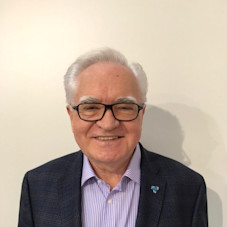Seventeen years ago, an AMT representative office was established in Central Europe, based in Warsaw, Poland. The region was considered difficult for business – and also exotic, culturally and socially. A trade mission to the Czech Republic, Poland, and Slovakia was organized in 2006. The participants of the well-attended event had a feeling that heading to what they considered Eastern Europe was plunging them into a risky adventure. They thought of themselves as intrepid, to say the least. Indeed, some situations during the trip proved to be unorthodox, but the conclusion reached was that their businesses would flourish in the region if taken care of professionally. By all parameters, these then-emerging economies were developing rather fast. The mission participants were particularly impressed with the FDI already in place, including many involving U.S. investors.
At that time, the reintegration of Central Europe, formerly part of the Eastern Bloc, into democratic Europe was in the early stages. Countries were first admitted into the European Union in 2004. Today, 10 countries in Central Europe are members. Only several countries of former Yugoslavia in the South and Albania are not, but a couple of them are in negotiations even now.
These days, Eastern Europe has basically been reduced to the countries of the former Soviet Union, except for three small countries in the Baltic Sea that managed to get out of the Soviet shadow. Today’s developments in Ukraine have alienated Russia. But in 2006 even Russia was largely playing by European rules, holding membership to several European organizations, actively participating in free international trade, and flirting with democracy. And the AMT Central European office expanded into Russia as it became one of the markets of value for AMT members. Then, in 2014, Russia annexed Crimea, instigating the conflict that continues today.
The last two decades have witnessed an unprecedented development of the economies of the EU members of Central Europe. Through EU policies and the actions of its people, we witnessed a real convergence of Central and Western Europe. The GDP per capita, calculated as purchasing power parity (PPP) for several countries of Central Europe, has already surpassed 87% of the Eurozone. Czechia, with nearly $40,000, and a couple smaller countries, rank higher than Spain or Italy and trail the French and Germans by a mere $5,000. Poland, with $34,500, is higher than Portugal, Italy, or Greece. What is particularly important is the brisk growth of European manufacturing and the creation of multibillion-dollar opportunities for technology suppliers – opportunities that have been covered in previous editions of AMT’s “International News From the Field: Europe.”
The Organisation for Economic Co-operation and Development (OECD) has made a pre-pandemic comparison of the economic strength of cities of the EU and U.K. with populations of over 1 million people. Munich has a strong lead with over $80,000 of GDP per person (calculated as PPP), and it is followed by Amsterdam, Duesseldorf, Paris, Stockholm, London, Frankfurt, and Stuttgart, with slightly over or below $70,000. No. 9 is Warsaw (some $64,000) ahead of Oslo, and No. 11 is Prague (some $62,000), ahead of Copenhagen, Milan, and Brussels – as well as such metropolises as Hamburg, Vienna, Madrid, and Rome. No. 30 is Budapest (some $45,000), ahead of Berlin, Barcelona, and Manchester. No. 43 is Krakow ($38,000), ahead of Leeds, Athens, Birmingham, and Liverpool. Country to country, Central Europe’s wealth and welfare may still be behind the most-developed countries of Western Europe, but at least two main cities of the region, Prague and Warsaw, are on par with Germany, the Netherlands, and Scandinavia.
German manufacturing, especially automotive, is dependent on the supply of components from Poland, Czechia, and Hungary. Austrian manufacturing relies on Hungary; French on Romania; Italian on Poland. Polish, Czech, and Romanian factories supply European (and U.S.) aerospace. Markets of Central Europe easily absorb consumer items of Western European origin. Capital as well as people move freely within the EU and the Schengen no-border area. On weekends, Budapest, Prague, Krakow, and Gdansk are flooded with European tourists. Central Europeans are buying property in Italy, France, and Portugal, some of them from the hands of the forced-to-exit Russians. Naturally, the raging war would keep the region far from being a safe zone. But it also makes Central Europe blend into Europe more and more.
The business potential for AMT members in Europe remains strong. Exotics have gone and business models have become fully European. It has been a wonderful ride, and I have enjoyed the many opportunities to offer a friendly hand and guidance. AMT will continue to do so. For a more personal farewell note, click here.






